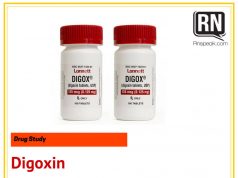Ascorbic Acid (Vitamin C)
Apo-C,Ascorbicap, Cebid, Cecon, Cenolate, Cemill, C-Span, Cetane, Cevalin, Cevi-Bid, Ce-Vi-Sol , Cevita, Flavorcee, Redoxon , Schiff Effervescent Vitamin C, Vita-C.
Ascorbate,Sodium
(a-skor´bate)
Cenolate, Cevita
Classifications: vitamin
Pregnancy Category:C
Availability
25 mg, 50 mg, 100 mg, 250 mg, 500 mg, 1000 mg tablets; 250 mg/mL, 500 mg/mL injection
Actions
Water-soluble vitamin essential for synthesis and maintenance of collagen and intercellular ground substance of body tissue cells, blood vessels, cartilage, bones, teeth, skin, and tendons. Unlike most mammals, humans are unable to synthesize ascorbic acid in the body; therefore it must be consumed daily.
Therapeutic effects
Increases protection mechanism of the immune system, thus supporting wound healing. Necessary for wound healing and resistance to infection.
Uses
Prophylaxis and treatment of scurvy and as a dietary supplement.
Unlabeled uses
To acidify urine; to prevent and treat cancer; to treat idiopathic methemoglobinemia; as adjuvant during deferoxamine therapy for iron toxicity; in megadoses will possibly reduce severity and duration of common cold. Widely used as an antioxidant in formulations of parenteral tetracycline and other drugs.
Contraindications
Use of sodium ascorbate in patients on sodium restriction; use of calcium ascorbate in patients receiving digitalis. Safety during pregnancy (category C) or lactation is not established.
Cautious use
Excessive doses in patients with G6PD deficiency; hemochromatosis, thalassemia, sideroblastic anemia, sickle cell anemia; patients prone to gout or renal calculi.
Route & dosage
Therapeutic
adult:PO/IV/IM/SC 150–500 mg/d in 1–2 doses
child:PO/IV/IM/SC 100–300 mg/d in divided doses
Prophylactic
adult:PO/IV/IM/SC 45–60 mg/d
child:PO/IV/IM/SC 30–60 mg/d
Urinary Acidifier
adult:PO/IV/IM/SC 4–12 g/d in divided doses
childPO/IV/IM/SC 500 mg q6–8 h
Administration
Oral
Give oral solutions mixed with food.
Dissolve effervescent tablet in a glass of water immediately before ingestion.
Intramuscular Subcutaneous
Open ampules with caution. After prolonged storage, decomposition may occur with release of carbon dioxide and resulting increase in pressure within ampule.
Be aware that ascorbic acid injection may gradually darken on exposure to light; slight coloration reportedly does not affect its therapeutic action.
Intravenous
- Verify correct IV concentration and rate of infusion for children with physician
PREPARE direct: /continuous: /intermittent: Give undiluted or diluted in solutions such as NS, D5W, D5/NS, RL. • Be aware that parenteral vitamin C is incompatible with many drugs. • Consult pharmacist for compatibility information.
ADMINISTER direct: Give undiluted at a rate of 100 mg or a fraction thereof over 1 min. continuous: /intermittent: Give at ordered rate determined by volume of solution to be infused.
Incompatibilities Solution / Additive: Aminophylline, bleomycin, cephapirin, erythromycin, nafcillin, sodium bicarbonate, warfarin. Y-site: Cefazolin, doxapram, sodium bicarbonate.
Store in airtight, light-resistant, nonmetallic containers, away from heat and sunlight, preferably at 15°–30° C (59°–86° F), unless otherwise specified by manufacturer.
Adverse effects
GI:Nausea,vomiting,heartburn,diarrhea,or abdominal cramps (high doses).
Hematologic:Acute hemolytic anemia (patients with deficiency of G6PD); sickle cell crisis.
CNS:Headache or insomnia (high doses).
Urogenital:Urethritis, dysuria, crystalluria, hyperoxaluria, or hyperuricemia (high doses).
other:Mild soreness at injection site; dizziness and temporary faintness with rapid IV administration.
Diagnostic Test Interference
High doses of ascorbic acid can produce false-negative results for urine glucose with glucose oxidase methods (e.g., Clinitest, TesTape, Diastix); false-positive results with copper reduction methods (e.g., Benedict’s solution, Clinitest); and false increases in serum uric acid determinations (by enzymatic methods). Interferes with urinary steroid (17-OHCS) determinations (by modified Reddy, Jenkins, Thorn procedure), decreases in serum bilirubin, and may cause increases in serum cholesterol, creatinine, and uric acid (methodologic inferences). May produce false-negative tests for occult blood in stools if taken with 48–72 h of test.
Nursing implications
Assessment & Drug Effects
- Lab tests: Periodic Hct & Hgb, serum electrolytes.
- Monitor for S&S of acute hemolytic anemia, sickle cell crisis.
Patient & Family Education
- High doses of vitamin C are not recommended during pregnancy.
- Take large doses of vitamin C in divided amounts because the body uses only what is needed at a particular time and excretes the rest in urine.
- Megadoses can interfere with absorption of vitamin B12.
- Note: Vitamin C increases the absorption of iron when taken at the same time as iron-rich foods.
- Do not breast feed while taking this drug without consulting physician.







